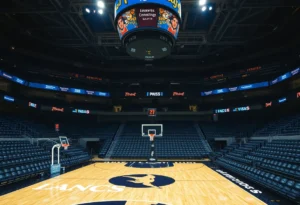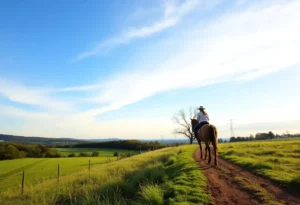Canine Visitors on the Rise in South Carolina Homes
South Carolina is experiencing an increase in sightings of canine visitors as residents encounter wild animals in their yards or on security cameras. The state is home to three furbearing species commonly mistaken for stray dogs: coyotes, red foxes, and gray foxes.
Who Are the Usual Suspects?
The South Carolina Department of Natural Resources (SCDNR) reports that these wild canines are more active than usual, particularly during summer and winter months. Jay Butfiloski, the Furbearer Project leader at SCDNR, explains the physical differences to help residents identify these species. Coyotes closely resemble medium-sized dogs, weighing between 30 and 45 pounds and standing about 23 to 26 inches tall at the shoulder. In contrast, foxes are significantly smaller, with a weight range of 7 to 13 pounds and a shoulder height of 15 to 16 inches.
What Do They Look Like?
Foxes have a more distinct appearance with their long legs and thinner body. The red fox is noted for its black legs, white-tipped tail, and reddish coat. Both coyotes and gray foxes can also exhibit reddish fur. However, gray foxes can be identified by their black-tipped tails. Butfiloski notes that during specific seasons, such as pup-rearing in the summer and mating in the winter, foxes and coyotes become especially visible.
When and Why Are They More Active?
As daylight savings shifts the timing of sunset, the overlap of human activities and these animals’ increased activity leads to more sightings. The decline in foliage during winter also exposes these creatures, making them more visible to residents. The use of home security cameras has contributed to the rise in reports, as notifications alert homeowners to nocturnal visitors.
Are They Dangerous?
While both species generally pose little threat to humans, they are wild animals and should be treated with caution. Coyotes, in particular, may pose a danger to larger pets and livestock. Butfiloski warns that aggressive behavior can occur during mating and pup-rearing seasons due to territorial instincts.
How Can Residents Stay Safe?
To protect pets, Butfiloski advises keeping them indoors at night. Additionally, leashing pets during walks can help monitor their interactions with wild canines. If encountering a coyote, residents should avoid turning away or running, as this can trigger a chase response. Instead, backing away slowly while keeping an eye on the animal is recommended.
Ways to Deter Canine Visitors
For those looking to keep foxes and coyotes at bay, there are several strategies. Building a fence can help, though it may not be an absolute barrier since both coyotes and gray foxes can climb. Clearing brush and hiding spots in yards can make properties less inviting. Homeowners should also avoid leaving out food scraps, animal feed, or bird seed, as these attract hungry wildlife.
Conclusion
As wild animal sightings rise in South Carolina, understanding the differences between coyotes and foxes can aid in reducing unnecessary panic. Residents are encouraged to take precautionary measures for their pets and properties while coexisting with these furbearers in a safe manner.

Author: HERE Greenwood
The GREENWOOD STAFF WRITER represents the experienced team at HEREGreenwood.com, your go-to source for actionable local news and information in Greenwood, Greenwood County, and beyond. Specializing in "news you can use," we cover essential topics like product reviews for personal and business needs, local business directories, politics, real estate trends, neighborhood insights, and state news affecting the area—with deep expertise drawn from years of dedicated reporting and strong community input, including local press releases and business updates. We deliver top reporting on high-value events such as the Festival of Flowers, Greenwood Community Theatre performances, and agricultural showcases at the Greenwood County Fairgrounds. Our coverage extends to key organizations like the Greenwood Chamber of Commerce and the Greater Greenwood United Ministry, plus leading businesses in manufacturing and healthcare that power the local economy such as FujiFilm Manufacturing and Self Regional Healthcare. As part of the broader HERE network, including HERECharleston.com, HEREColumbia.com, HEREGreenville.com, and HEREHiltonHead.com, we provide comprehensive, credible insights into South Carolina's dynamic landscape.


























